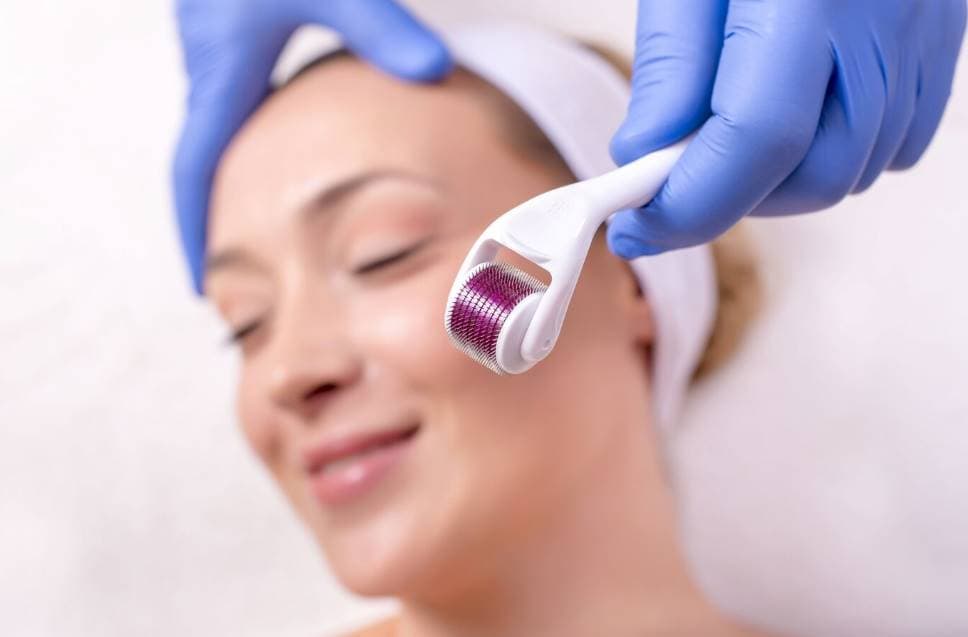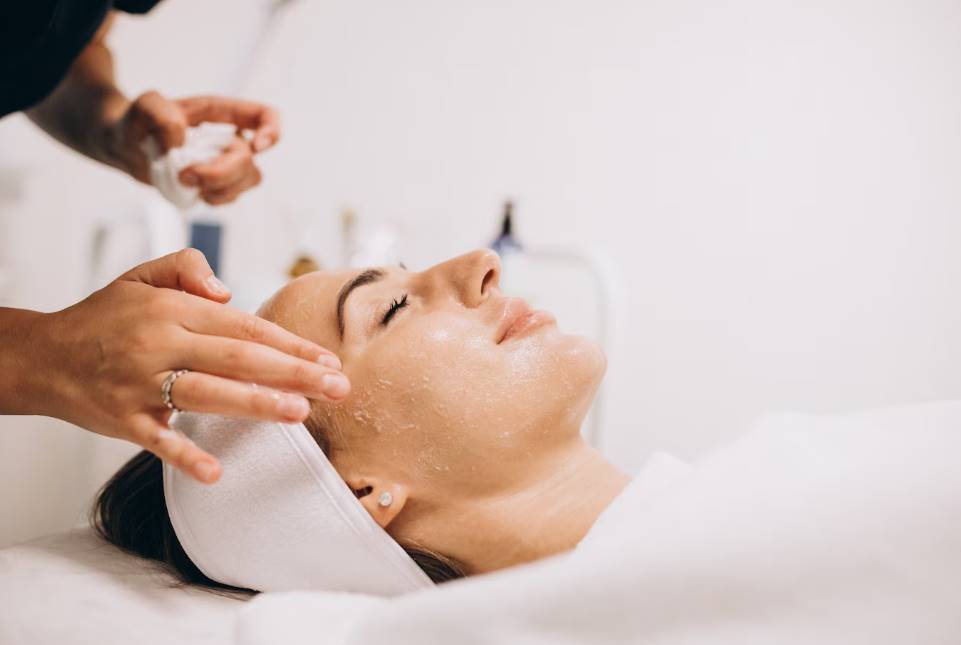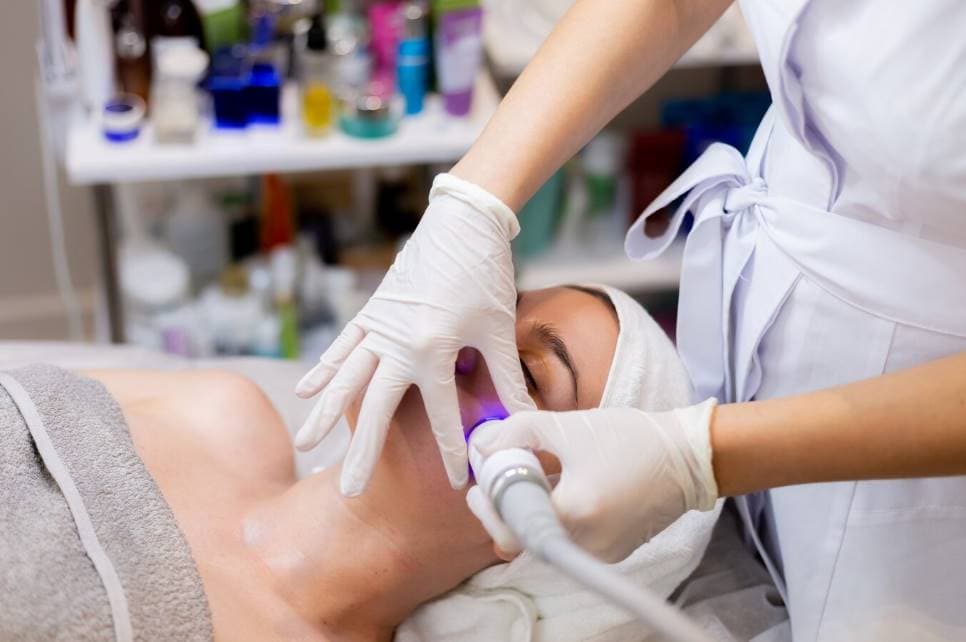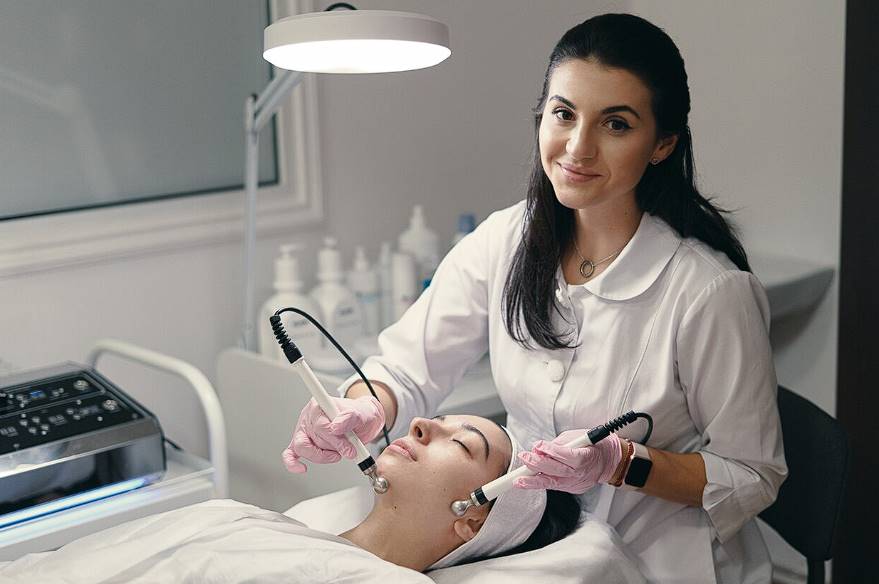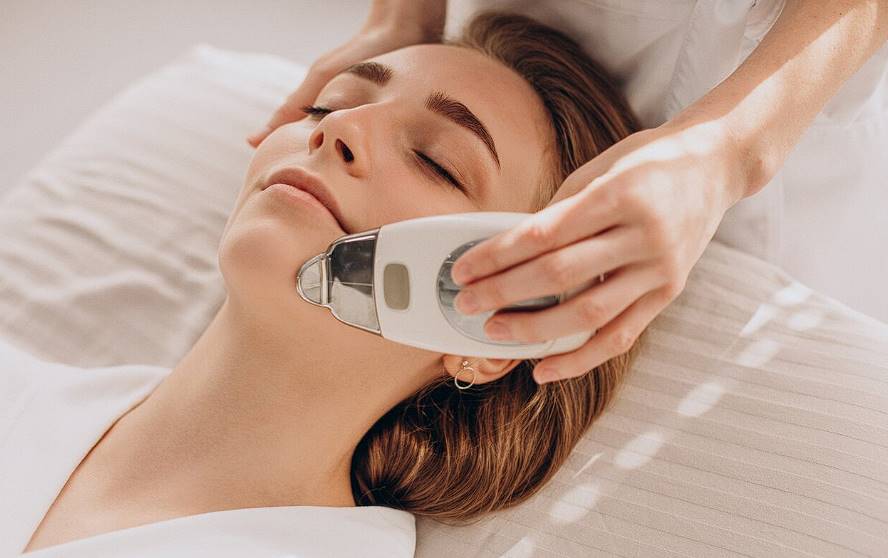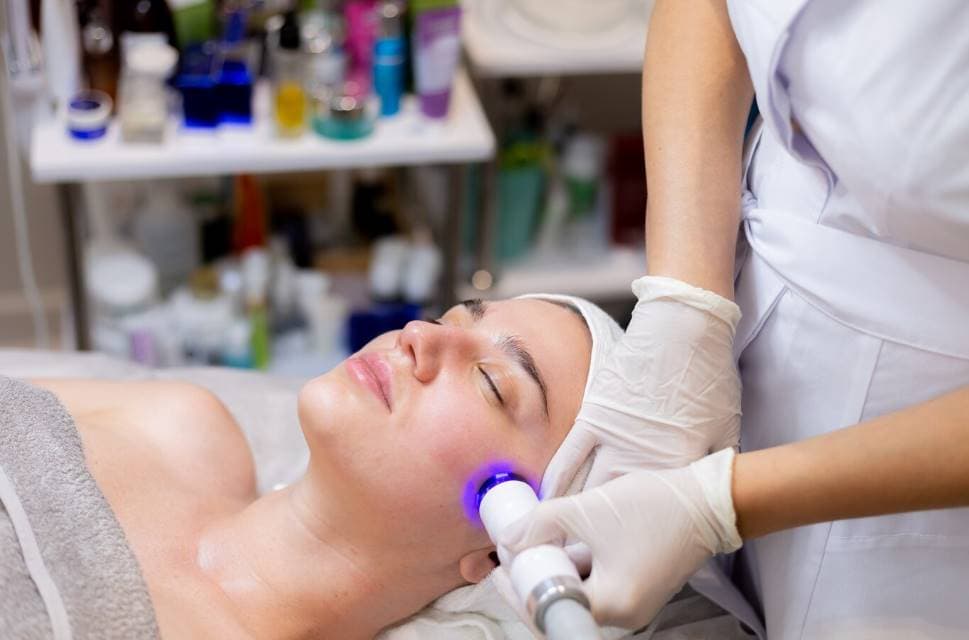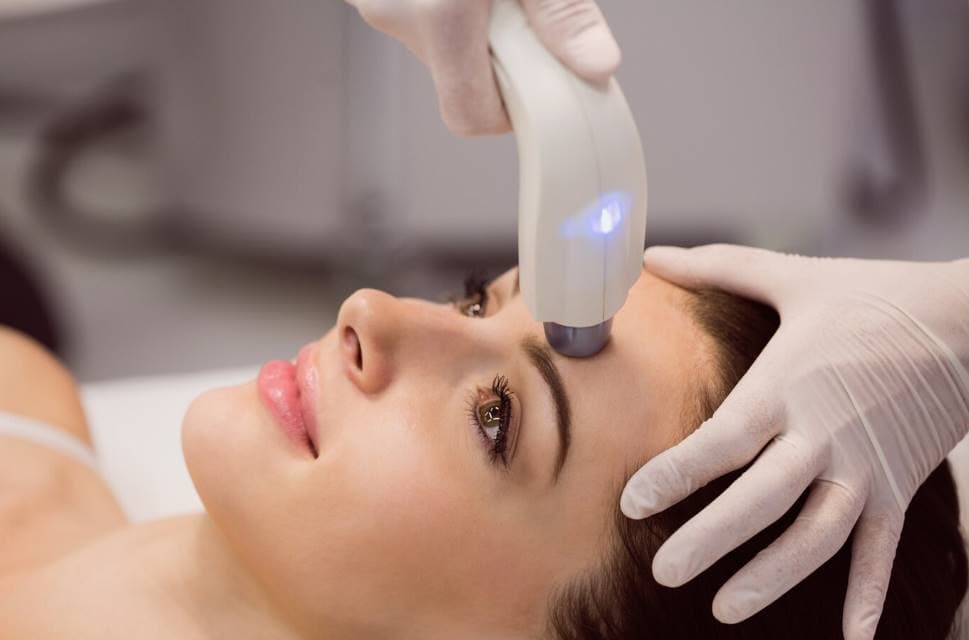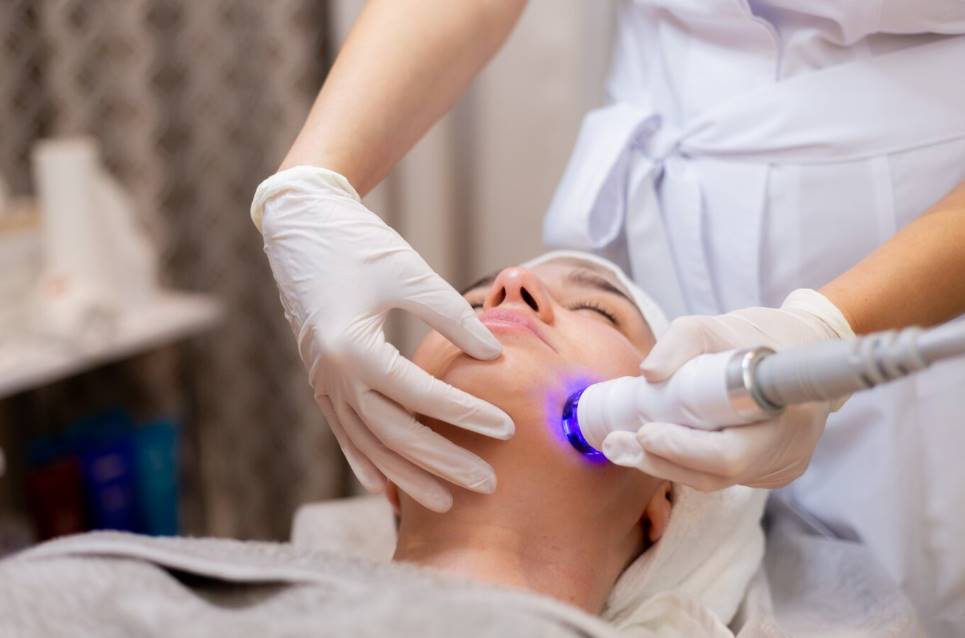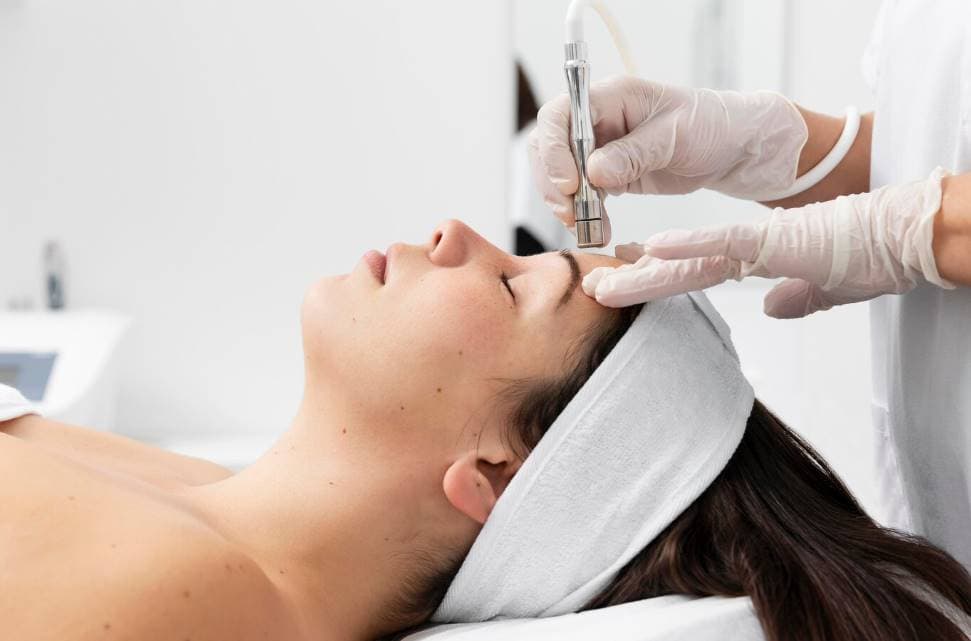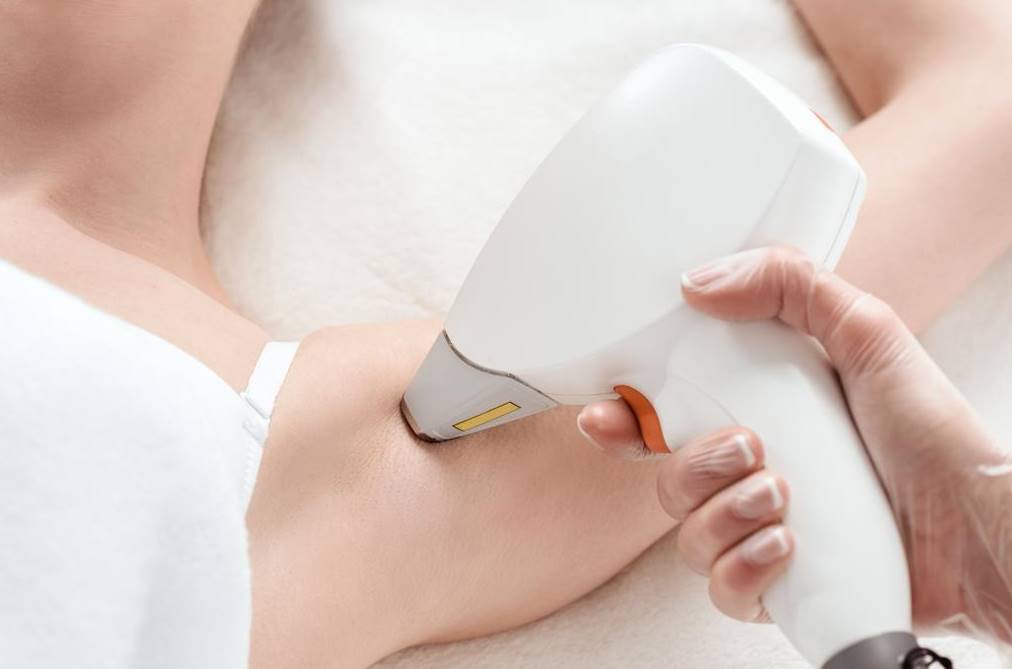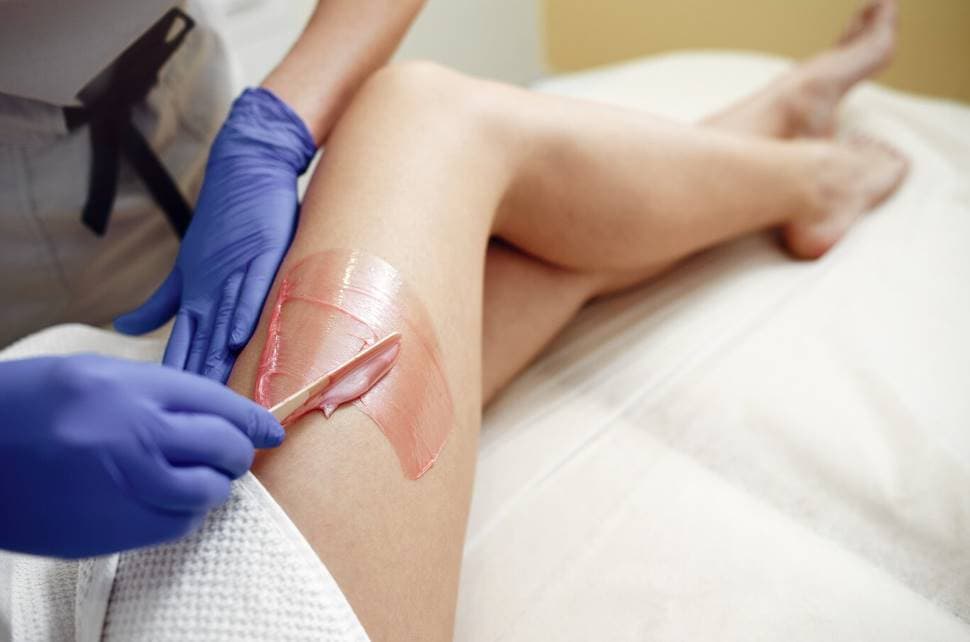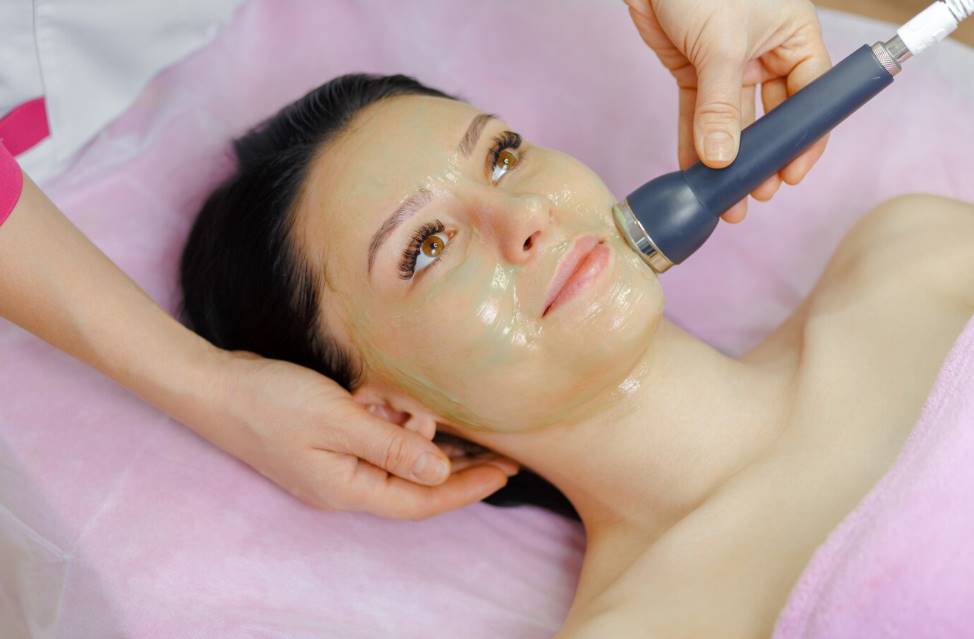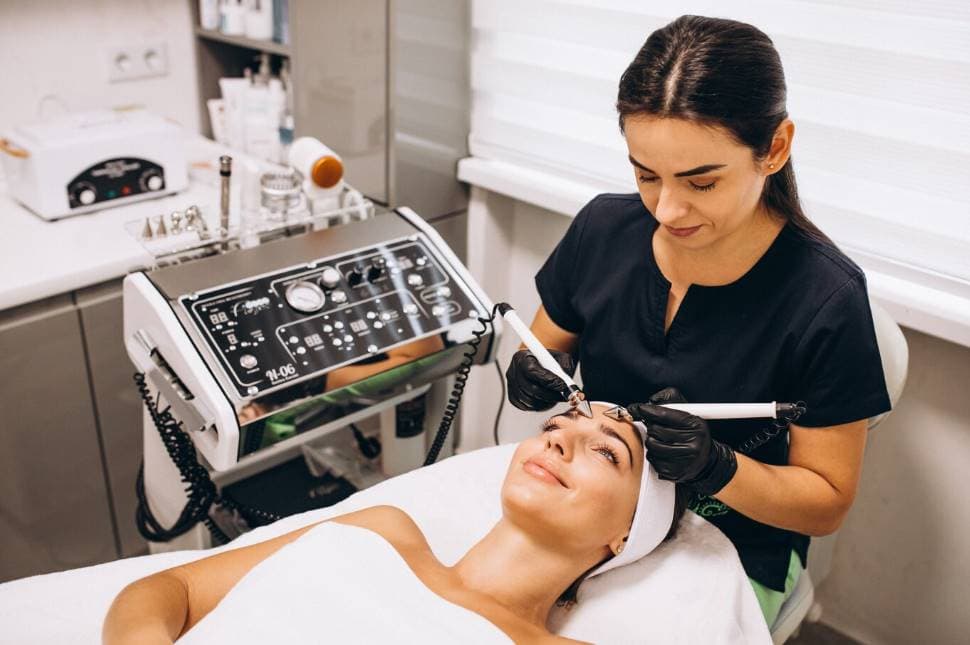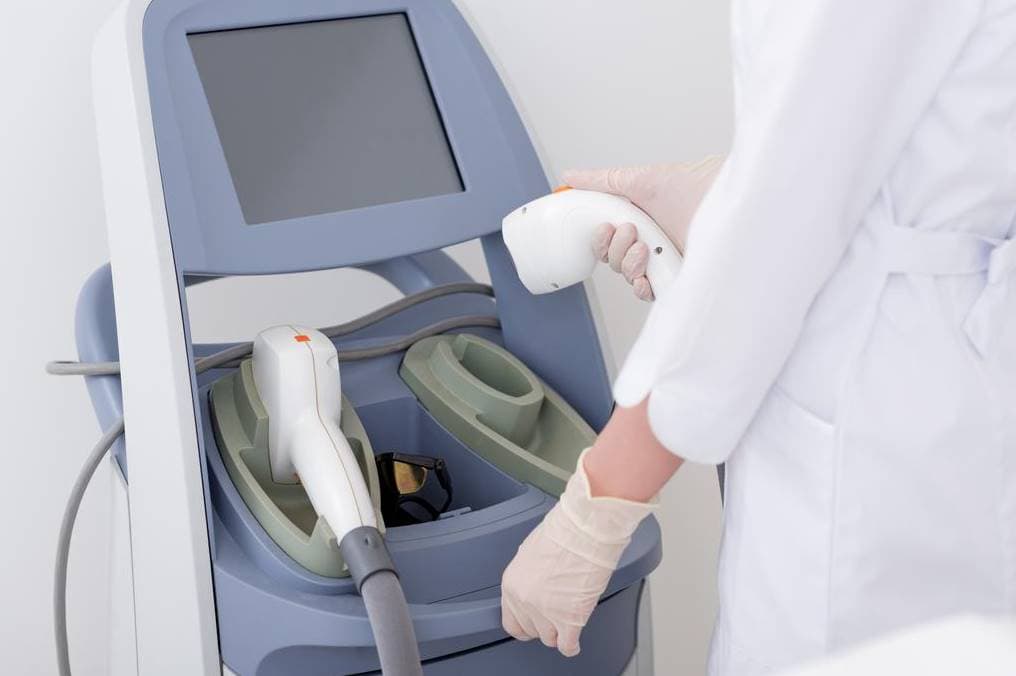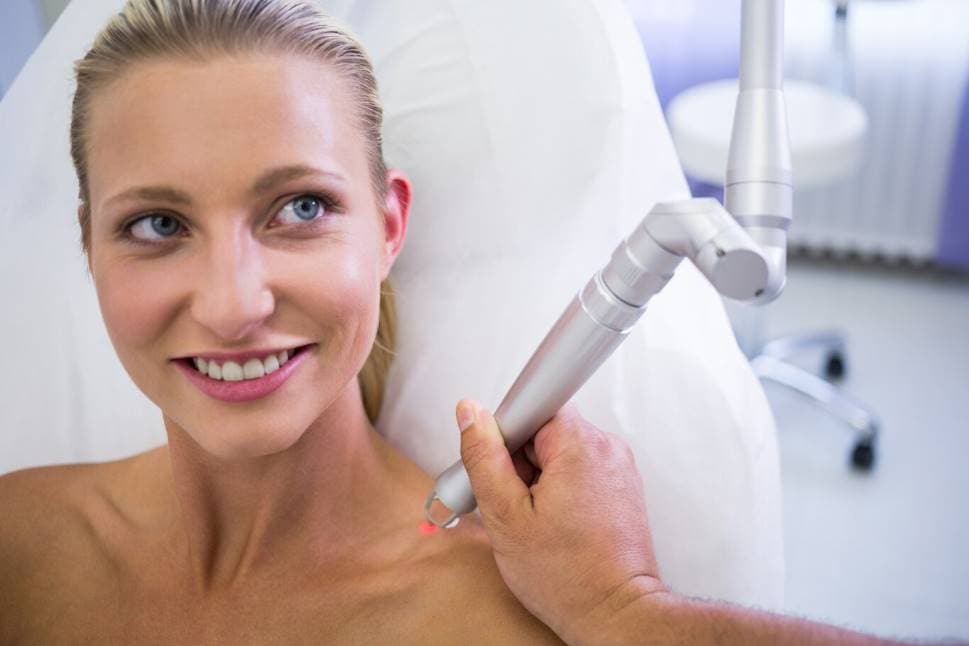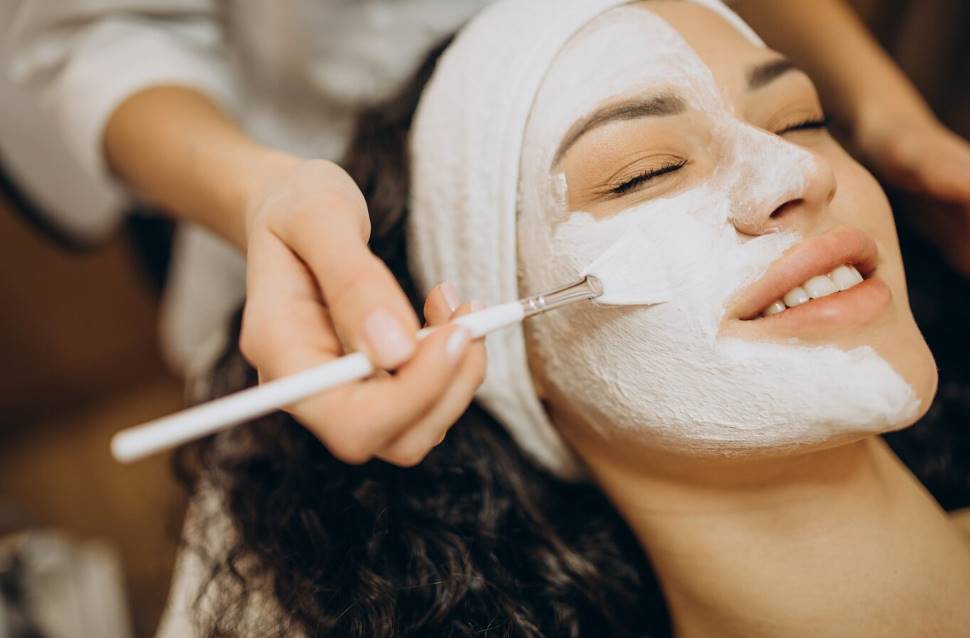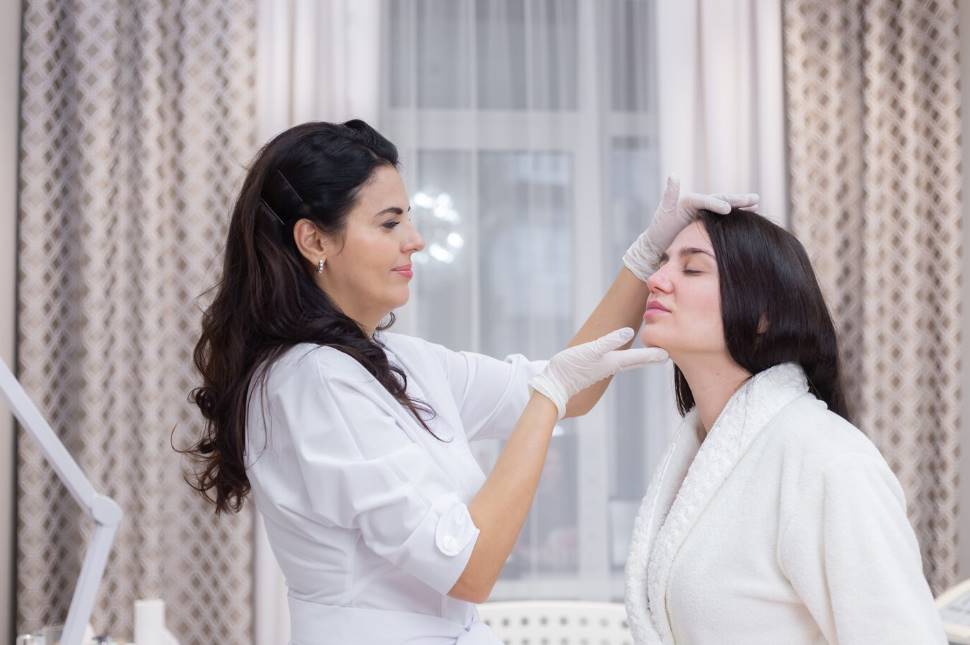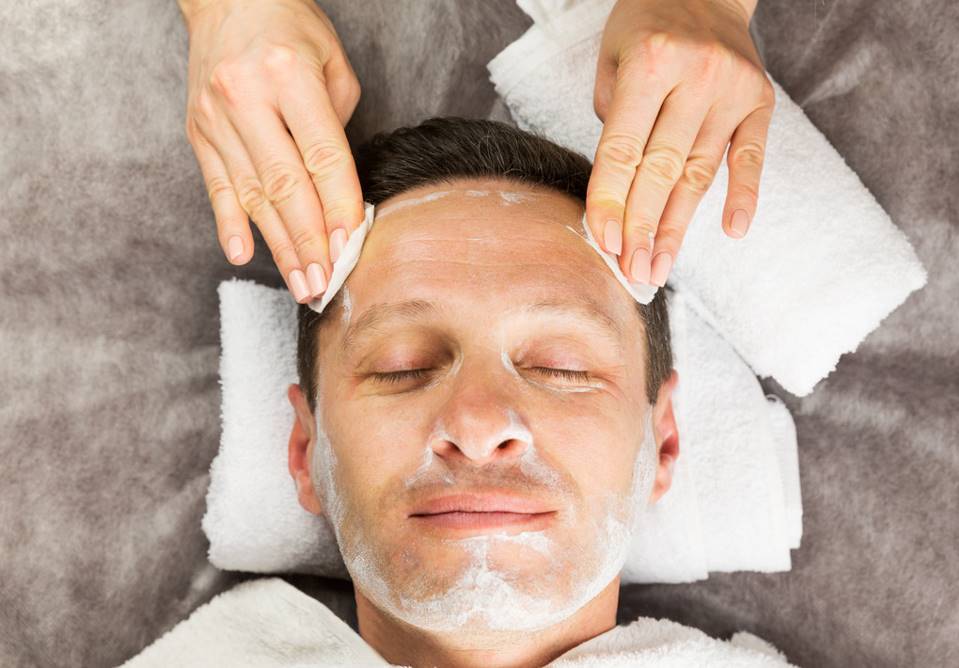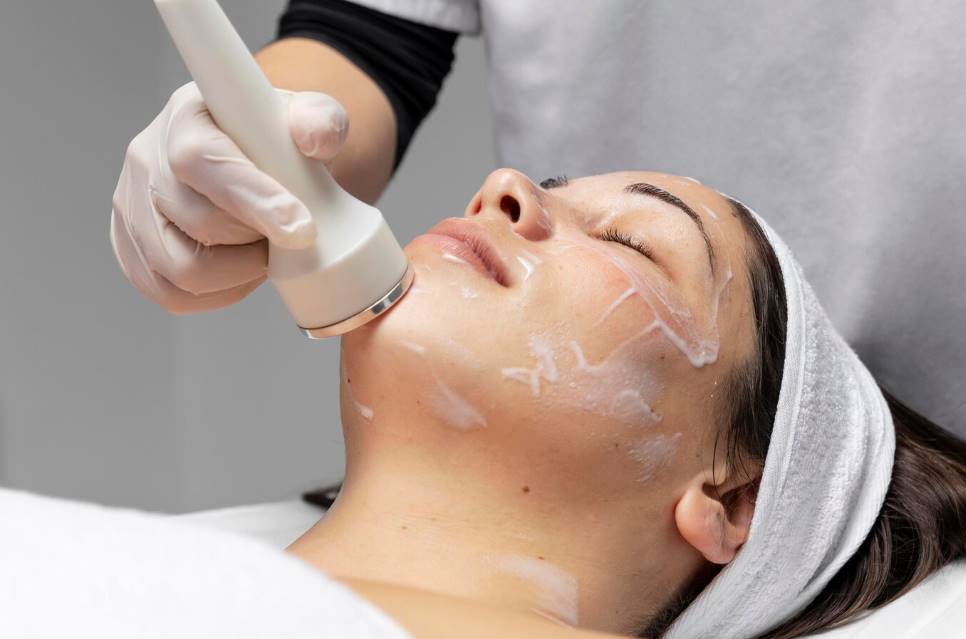Rolling rows of tiny needles over your face will give you the skin you've always desired and make you look years younger. It may sound intimidating, but it's not.
Microneedling was first developed as a method for concealing scars. Initially, a tattoo gun was used, but no ink was used. As a method of maintaining youthful skin and eliminating fine lines and wrinkles, it is quickly rising in favour of beauty therapy. While you may get microneedling devices at your local drugstore or beauty supply store, it's best to have a trained expert do the procedure.
There is a chance of infection because the surgery leaves tiny lesions on your skin. It is usually safer to have a professional carry out the procedure. Feel like giving it a shot? Read on for more on what to expect from microneedling and how to prepare for it.
What Is Microneedling?
Microneedling is a non-surgical cosmetic procedure that stimulates collagen formation to treat skin issues. Collagen induction therapy, also known as micro-puncture therapy, involves making very small punctures in the skin with sterile needles. During the healing process, microneedling can increase skin suppleness and diminish the appearance of scars and discolouration.
Microneedling may also stimulate hair development in persons with alopecia. If you're otherwise healthy and you've tried other methods, like chemical peels and topical creams, to address your skin issues, but nothing has worked, then you might be a good candidate for this operation. This could be the last resort before more drastic cosmetic surgery. If you need clarification on whether this treatment is appropriate for your skin, a dermatologist can advise you.
What Is The Difference Between Microneedling And Microdermabrasion?
Both microneedling and microdermabrasion can make your skin look and feel better. Microdermabrasion, on the other hand, is needle-free. Instead, your doctor will use a device similar to sandpaper to remove the outermost layer of skin because the deeper penetration of microneedling may be more effective than microdermabrasion for treating acne scars and other disorders beneath the skin's surface.
Who Can Get Microneedling?
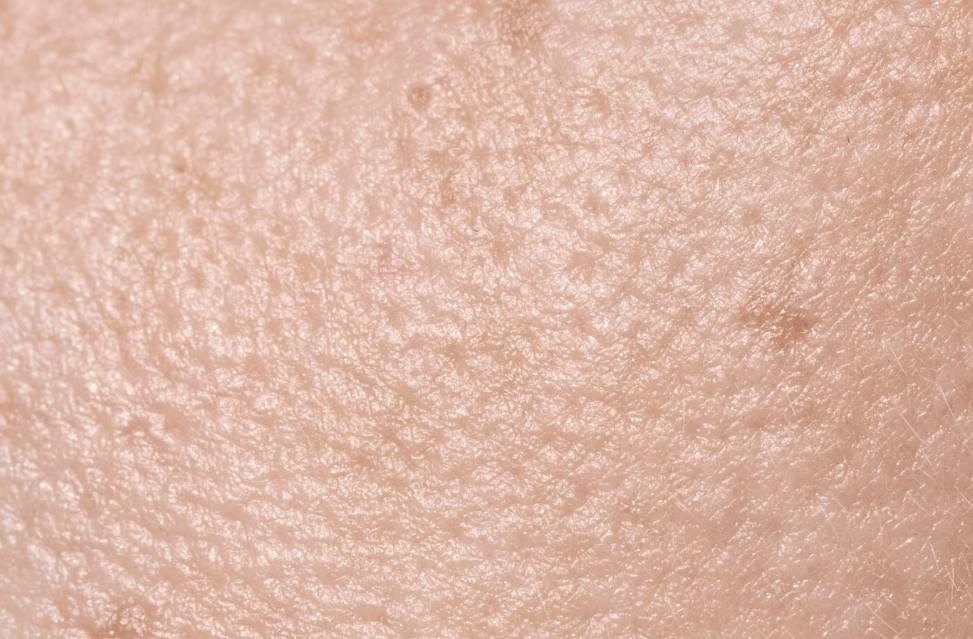
Both medicinal and beauty applications exist for microneedling. Microneedling is an option to consider if you have any of the following concerns:
- Bigger pores.
- Wrinkles or fine lines.
- Skin that is thin and wrinkled, loose or crepey.
- Gentle scars, particularly those left by burns or acne.
- Uneven skin tone or discolouration of the skin.
- Stretch marks.
Additionally, the surgery can benefit those with the following medical conditions:
- Autoimmune disease-related hair loss, or alopecia areata.
- Excessive sweating is known as hyperhidrosis.
Medications and immunisations can be injected subcutaneously via microneedling. Instead of getting shots from a doctor, the microneedles might be included in a patch that patients apply themselves.
When Is Microneedling Not A Good Idea?
If you have any of the following conditions, you should discuss microneedling with your doctor first.
- Acne or are currently taking acne treatment.
- Blood conditions or are using anticoagulants (medication that stops blood clots).
- Cancer and are undergoing radiation therapy or chemotherapy.
- Cold sores or recurrent skin rashes (contact dermatitis).
- Keloidal tendency: (hard, elevated scars on your skin).
- Changing moles, skin tags, freckles, or other growths that bleed.
- Skin disorders like psoriasis and eczema.
Procedure Details
Before Microneedling
The preparation for microneedling is a vital part of the whole process. Optimal results from therapy and avoiding complications can be achieved with adequate preparation. Ensuring your skin is relaxed is a crucial step in preparing for microneedling. That's because you need to treat your skin with a plethora of different cosmetics.
In the days before your treatment, don't exfoliate. Some acne drugs require you to stop taking them weeks or months before microneedling is performed. Topical retinoids and antibiotics should also be avoided for at least a week before the session. Over-the-counter pain relievers, such as ibuprofen, should be avoided since they may prevent the body from mending properly. Apply sunscreen to your face every day for the two weeks leading up to your visit. In the week following your treatment, don't wax, shave, or use other methods to remove hair from your skin.
During Microneedling?
After disinfecting the area, your healthcare professional applies a numbing agent such as lidocaine gel. This is done between 30 and 45 minutes before the treatment begins to allow the ointment to take effect.
The wounds in your skin are then made using a hand roller or an electric tool by your healthcare professional.
The roller features very fine needles. The person caring for you uses it to roll across your skin softly. If the electric gadget is used, the needles will prick your skin with a pulsing motion. The length of the needles can be adjusted on the electric gadget. If your scars or acne pockmarks are deep, a longer needle may be necessary. Needles can be anywhere from half a millimetre to two millimetres in length.
Once the microneedling begins, you may feel a warming or scratching sensation on your face. Needles placed too close to bony prominences, like the cheekbones, might cause pain for certain patients. Microneedling at a deep level may result in little bleeding. The time required for a microneedling process ranges from 15 minutes to several hours.
After Microneedling?
You can go home immediately following a microneedling session because it is an outpatient procedure. For up to five days, your skin may be irritated and inflamed. Irritation and pain can be alleviated with the use of an ice pack. Most patients can return to normal activities the day after the treatment, including wearing makeup, but they should avoid the sun.
Benefits And Risks Of Microneedling
The numerous advantages of microneedling have contributed to its rising popularity. It can be tailored to each individual for optimal results in skin renewal and plumping with little risk and recovery time.
Benefits
- Lessening the visibility of scars, particularly those left by acne
- Diminishing the visibility of wrinkles and fine lines
- Minimised enlarged pores
- Lessening the visibility of dark spots or hyperpigmentation
- Levelling out the skin tone
- An increase in skin elasticity
- Lessening the visibility of stretch marks
- Scars are less noticeable
- Encouraging the development of hair in alopecia
For certain individuals, microneedling may be more effective than laser therapy and is far less costly. The application of heat during laser treatments may have an impact on the pigmentation of your skin.
Because of safety issues related to some types of laser treatments on skin of colour, people with darker skin tones might find microneedling more appealing than laser therapy. More research must be done on the safety and efficacy of laser treatment for darker skin tones.
Risks
Microneedling is a safe, non-invasive way to revitalise your face that can benefit nearly anyone. Because of its mild nature, the PIN method is risk-free for people of all ages, skin tones, and cultural backgrounds. An excellent applicant will be healthy and familiar with microneedling's benefits and drawbacks. Patients hoping to see positive outcomes from microneedling should keep their hopes high.
People with a skin infection will need to wait before beginning PIN therapy. Microneedling is a minimally invasive alternative to more extreme procedures like CO2 laser or deep chemical peels, yet it takes multiple sessions (3-6) to achieve the same noticeable results.
It is not recommended for patients receiving radiation treatment or with an active skin infection. People who have used Accutane for acne within the past three months are also not ideal candidates since it slows wound healing. When discussing your candidature with your doctor, you must tell the truth so that they can help you select the most appropriate and, most importantly, safest treatment option.
Recovery And Outlook
Post-Micro Needling: What Should I Expect?
Knowing what to expect on the day of your microneedling treatment is an important part of getting ready for the procedure. In this manner, you can maximise its benefits without experiencing any unpleasant surprises.
Your aesthetician will start by applying a numbing cream to the skin area that will be treated. This lessens the potential for pain during the microneedling procedure. After it has served its purpose, your aesthetician will remove it by wiping your skin with alcohol. The potential for infection is thus diminished.
The next step is to glide the microneedling device across your skin in several ways. This could be accomplished in straight or curved lines or a combination. Needle penetration may be controlled in real-time, going deeper into thicker portions of skin while remaining gentler in thinner places.
To maximise the benefits of microneedling, a little chemical peel might be performed as a last step. The appearance of acne scars, leathery skin, and wrinkles can all be improved with a light chemical peel (with glycolic, lactic, or salicylic acid). After a light chemical peel, your skin is more receptive to absorbing the rest of the skincare ingredients because it has micro-injuries from the treatment. CooLifting is a wonderful complement to your microneedling session. CooLifting uses a cold application of hyaluronic acid to the skin, which increases the hyaluronic acid's penetration and speeds up the healing process.
Aftercare
On days 1-3 following the operation, you may notice some redness and possibly some pinpoint bleeding. Most patients will have a sunburnt appearance and may feel dry by day two. By day 4, the skin had typically recovered completely. The following skincare routine will help calm the skin:
- Please call your doctor in advance if you experience any cold sore symptoms so we can prescribe an antiviral medication.
- For three days following the procedure, avoid strenuous physical activities, medical environments where you could contract an infection, and dirty chores (such as cleaning the restroom, etc.).
- You should not apply mineral sunscreen or cosmetics (including Zinc or Titanium) for the first two days following the treatment. Instead, it would help if you tried to stay out of the sun and cover up with a hat.
- You can't use retinoids or vitamin C serum for four days following surgery.
- After your operation, don't take any glycolic acid for four days.
- Men: After the operation, your skin may feel itchy for up to three days, so you should wait to shave for at least that long.
When To Call The Doctor

Get in touch with your doctor if you observe that the area that was treated is:
- Continual bleeding for more than a day.
- Blistered.
- The swelling persisted for over a week.
Is Diy Microneedling Worth Trying?
There are a variety of microneedling kits you can use at home. There are significant distinctions between these and visits to a dermatologist despite these being significantly more affordable. Home-use devices differ from medical-grade versions because the needles are shorter and less sharp. Because home devices are not designed to pierce the skin, at-home treatments are less painful than medical procedures.
This indicates that the effectiveness of a treatment done at home is restricted.
However, even at-home devices will boost circulation, temporarily improving skin tone. Finally, microneedling devices are more challenging to clean, which increases the risk of infection or harm, especially if the needles enter the skin.
Comparing Microneedling With Other Cosmetic Procedures
Chemical peels, like microneedling, can enhance skin's texture, pores, fine wrinkles, acne, and acne scars, but unlike microneedling, they typically require many treatments. It's worth noting that laser treatments, while not as gentle as microneedling, can sometimes achieve identical results in less time. If you choose the right laser, there may be more recovery time but fewer treatments.
Microneedling has been shown to be an effective alternative to more invasive techniques like laser skin resurfacing and deep chemical peels. It is possible to combine radiofrequency and microneedling. Like microneedling on steroids, it can effectively treat acne scars and wrinkles. It is uncomfortable. However, you reach the endpoint in a shorter number of sessions.
Conclusion
Microneedling is a non-surgical cosmetic procedure that stimulates collagen formation to treat skin issues, including acne scars and fine lines. It was initially developed as a method for concealing scars but has since become popular for maintaining youthful skin and eliminating fine lines and wrinkles. The procedure can be performed by a trained expert, but there is a risk of infection due to the small lesions left on the skin.
Both microneedling and microdermabrasion can improve skin appearance and feel better, but microdermabrasion is needle-free and uses a device similar to sandpaper to remove the outermost layer of skin. Patients with larger pores, wrinkles, thin, wrinkled, loose or crepey skin, general scars, uneven skin tone, and stretch marks may benefit from microneedling.
Medications and immunisations can be injected subcutaneously via microneedling, and patients can apply microneedles in patches. However, it is not recommended for individuals with certain conditions, such as acne, blood conditions, cancer, cold sores, keloidal tendency, psoriasis, or eczema.
Preparation for microneedling involves avoiding exfoliation, using topical retinoids and antibiotics, and using sunscreen. The procedure begins with a hand roller or electric tool with fine needles, which can be adjusted for deeper scars or acne pockmarks. The process takes between 15 minutes and several hours.
After microneedling, patients can return to normal activities, but they should avoid the sun.
Microneedling is a popular and effective treatment for skin renewal and plumping, offering numerous benefits such as reducing the visibility of scars, wrinkles, fine lines, dark spots, stretch marks, and encouraging hair development. It is a safe, non-invasive option suitable for people of all ages, skin tones, and cultural backgrounds. However, it is not recommended for patients with skin infections, radiation treatment, or those who have used Accutane for acne within the past three months.
Post-microneedling, patients should expect some redness, pinpoint bleeding, sunburn, and dryness. Aftercare involves following a skincare routine, avoiding strenuous physical activities, using sunscreen or cosmetics, and not taking glycolic acid for four days. Men may experience itching for up to three days after the procedure.
Diy microneedling kits are available at home, but they are less painful than medical-grade versions due to shorter needles and less sharp needles. Although at-home treatments are less painful, they can temporarily improve skin tone and boost circulation. However, microneedling devices are more challenging to clean, increasing the risk of infection or harm.
Comparing microneedling with other cosmetic procedures like chemical peels and laser treatments, microneedling has shown to be an effective alternative to more invasive techniques like laser skin resurfacing and deep chemical peels. Combining radiofrequency and microneedling can effectively treat acne scars and wrinkles, but it is uncomfortable but can reach the endpoint in a shorter number of sessions. More research is needed to determine the safety and efficacy of laser treatment for darker skin tones.
Content Summary
- Microneedling is a popular technique that claims to rejuvenate the skin.
- Originally, microneedling was developed to conceal scars.
- In its early stages, a tattoo gun without ink was employed for the procedure.
- Microneedling is now favoured for maintaining youthful skin and reducing wrinkles.
- Microneedling devices are available for purchase, but it's safer to get the procedure done by a professional.
- The procedure leaves tiny lesions on the skin, posing a potential infection risk.
- Microneedling is a non-surgical method that encourages collagen production.
- The procedure is also known as collagen induction therapy or micro-puncture therapy.
- By making small punctures, microneedling can enhance skin suppleness and reduce scars.
- The procedure can also stimulate hair growth for those with alopecia.
- Microneedling can be an alternative if other methods, like chemical peels, fail.
- Consulting a dermatologist can provide clarity on its suitability.
- Microneedling differs from microdermabrasion as the latter is needle-free.
- Microneedling may offer more effective results for deeper skin issues than microdermabrasion.
- Microneedling can address concerns like large pores, wrinkles, and uneven skin tone.
- The procedure can also help with medical conditions like alopecia and hyperhidrosis.
- Some medications can be delivered subcutaneously through microneedling.
- Certain conditions like active acne or blood disorders may require consultation before opting for microneedling.
- Preparation for microneedling is crucial for optimal results.
- Patients are advised not to exfoliate or take certain medicines before the treatment.
- It's important to avoid hair removal methods like waxing the week before the session.
- A numbing agent, usually lidocaine gel, is applied before the procedure.
- The actual microneedling can be done with a hand roller or an electric tool.
- The length of the needles can vary depending on the depth of scars.
- The process might cause a warm or scratching sensation.
- The duration of a microneedling session can range from 15 minutes to hours.
- Post-procedure, patients can usually go home immediately.
- Skin irritation might persist for up to five days.
- It's advisable to avoid sun exposure after the procedure.
- Microneedling offers several benefits including reduced scar visibility and improved skin elasticity.
- The procedure might be a more affordable and effective option than laser treatments for some.
- Dark-skinned individuals might prefer microneedling over certain laser treatments due to safety concerns.
- Generally, microneedling is safe for people of all backgrounds.
- Microneedling might require multiple sessions to match the results of more invasive procedures.
- It's unsuitable for those undergoing radiation or with active skin infections.
- Honesty with your doctor is vital to determine the most suitable and safest treatment.
- Knowing what to expect on the treatment day is crucial for preparation.
- The aesthetician applies a numbing cream to minimise pain.
- The microneedling device is moved in different patterns across the skin.
- A light chemical peel might be administered after microneedling to maximise benefits.
- Post-microneedling, skin is more receptive to other skincare ingredients.
- CooLifting can complement microneedling by speeding up the healing process.
- Aftercare post-microneedling is essential for optimal results.
- Microneedling claims to make individuals look years younger.
- Optimal preparation ensures reduced complications from the treatment.
- Both microneedling and microdermabrasion aim to improve the skin's appearance.
- Microneedling can treat issues beneath the skin's surface.
- A dermatologist can offer valuable advice regarding the procedure's appropriateness.
- The electric tool used in microneedling can adjust the needle length.
- Microneedling is considered a minimally invasive alternative to extreme procedures like CO2 laser treatments.
Frequently Asked Questions
Results may vary based on the severity of the skin concern, its location, and the treatment plan used.
A doctor may recommend four to six treatment sessions. The skin may continue increased collagen production for 3 to 6 months after microneedling treatment.
No, derma roller results aren’t permanent. While derma rollers work under the same principle as microneedling, they don’t penetrate the skin as deeply as microneedling does. If you plan to use a derma roller at home, you may need to use it more frequently to maintain results. Talk with a dermatologist to determine what’s right for you.
Treatment plans vary from person to person, but research Source has shown mild improvement in post-acne scarring after just two microneedling sessions.
After six sessions, people saw moderate skin texture improvement and good scar appearance enhancement.
It’s not recommended to undergo a microneedling procedure while taking isotretinoin (Accutane) as it may increase the likelihood of scarring from the procedure.
You should wait at least six months after stopping the medication before starting your microneedling treatment.
Microneedling can cause bleeding, so it may not suit people with clotting or bleeding disorders or who take medicine to thin their blood. You may want to avoid microneedling if you have conditions that affect your skin, such as eczema, diabetes, or a weakened immune system.
